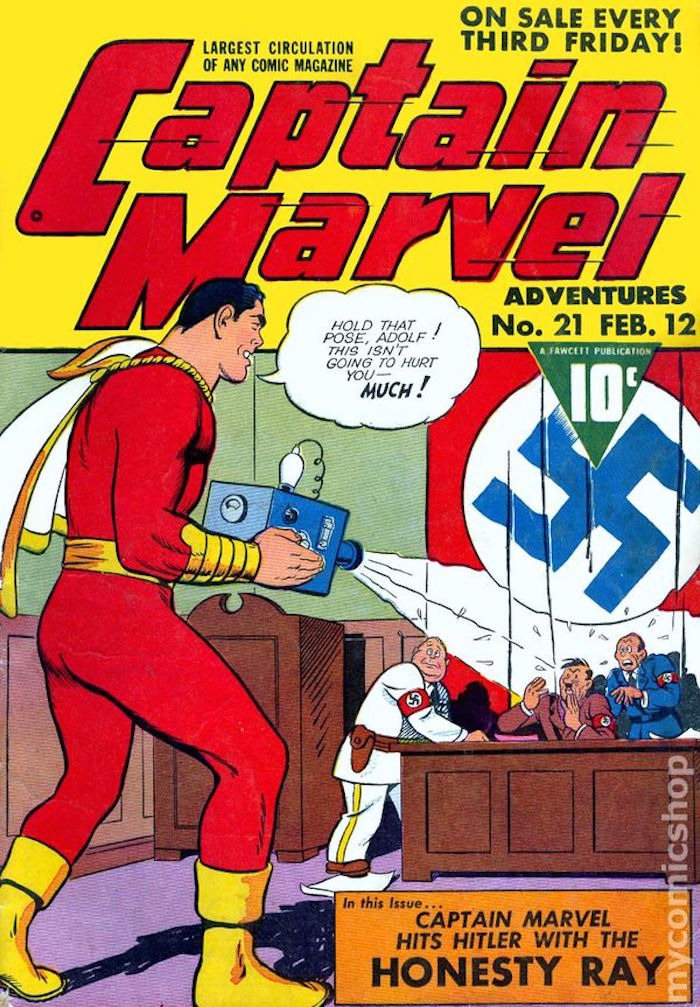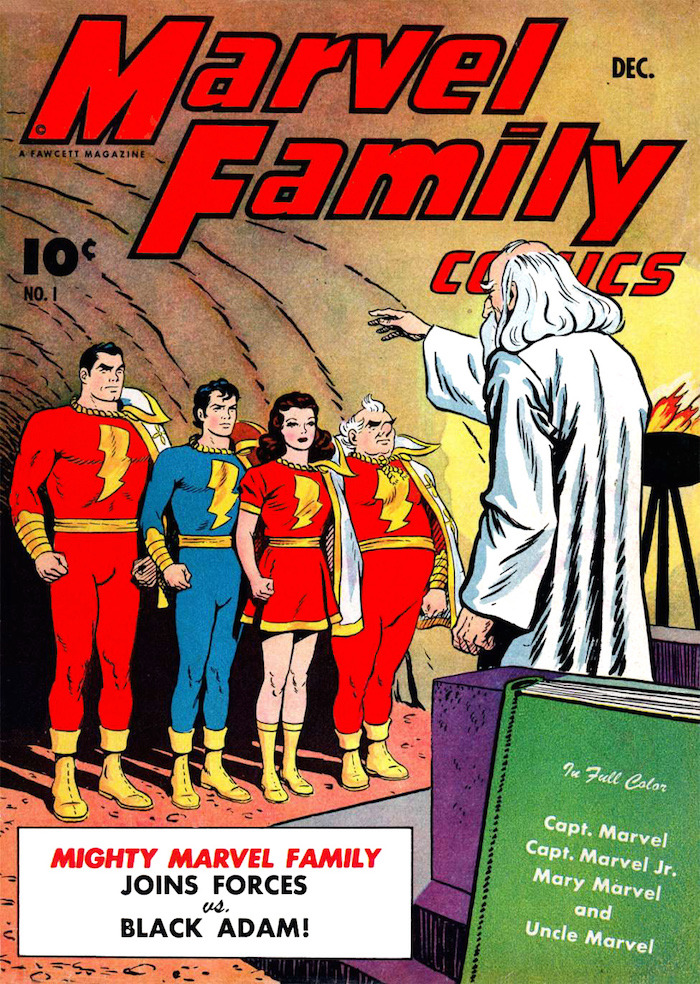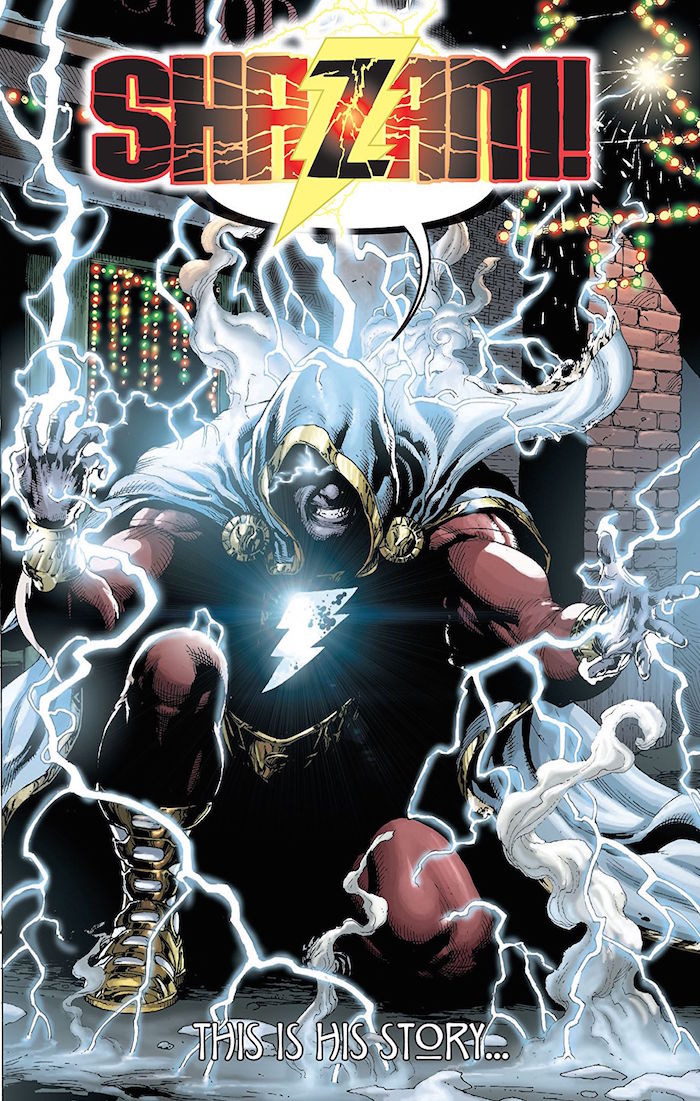Say His Name: The Crazy Comic Book History Of 'Shazam!'
DC's Shazam! hits theatres this week, making it the second Captain Marvel movie in under a month. The other one by Marvel Studios was about Carol Danvers, who has her own convoluted history. Most comic fans today associate Carol with "Captain Marvel" moniker, which she's held since 2012, but it wasn't always this way. In fact, decades before Marvel had any Captain Marvel at all, Fawcett Comics created a fun, friendly superhero who, in his early years, outsold even the likes of Superman.By all accounts, the original Captain Marvel (now known as Shazam!) ought to have remained as popular as DC A-listers like the Man of Steel, Wonder Woman and the Caped Crusader. So, what happened? And why the need for a name change after all these years?Well, it all began during World War II.
The 1940s
Once the folks at DC (then National Comics) found success with Batman and Superman, Fawcett Publications sought to create its own superhero in 1939. After tossing around names like Flash Comics, Captain Thunder and Thrill Comics, the company settled on Whiz Comics, after Fawcett's first magazine in 1919, Captain Billy's Whiz Bang. The second issue of Whiz Comics, cover dated February 1940, was set to introduce Captain Marvelous, created by Bill Parker and C. C. Beck (though once Parker was drafted to WWII, he was soon replaced by Otto Binder). The character's name, as you may have guessed, was shortened to Captain Marvel.Named for the company's founder Wilford "Captain Billy" Fawcett, Billy Batson was an orphaned twelve-year-old who, after speaking the name of the wizard who granted him his powers ("SHAZAM," an acronym for Solomon, Hercules, Atlas, Zeus, Achilles and Mercury) could transform into the adult superhero Captain Marvel. A year later in 1941, Fawcett Comics launched the character's solo title Captain Marvel Adventures, the first issue of which was penned by none other than Captain America creators Joe Simon and Jack Kirby.Not long after, while Superman was getting the animated treatment at Fleischer Studios and Batman and Captain America's first screen adaptations were still years away, Republic Pictures launched their first comic book-based serial, Adventures of Captain Marvel in 1941, essentially creating the live-action superhero movie.The following year saws the introduction of the Marvel Family; Captain Marvel Jr., the alter ego of Freddy Freeman (played in the upcoming film by Jack Dylan Grazer), Mary Marvel, the alter ego of Billy's twin sister Mary, and eventually, the likes of Lt. Hill Marvel, Lt. Fat Marvel, Lt. Tall Marvel, Uncle Marvel, and my personal favourite, Hoppy the Marvel Bunny. By 1947, Tawky Tawny, a polite, suited, anthropomorphic tiger, had become a regular fixture as well.Things were going smoothly for Captain Marvel. By the end of the decade, he had regular antagonists in the form of Dr. Sivana and Black Adam (soon to be played on screen by Mark Strong and Dwayne Johnson), though his biggest villain would end up being rival company National Comics in the early 1950s.
Cancellation
After the Adventures of Captain Marvel series was announced, Detective Comics and Superman Inc. (which would later merge to form National Comics) had initially filed a cease and desist against the character in film and in print. They alleged he was a Superman knockoff, from his speed, strength, flight and design, to his journalist alter-ego (Batson was originally a radio host).After a complicated back-and-forth involving the unearthing of Superman's own copyright issues (National's failure to copyright Superman newspaper strips), the trial went in Fawcett's favour, but it was also decided that Captain Marvel was, in fact, an illegal copy of Superman — not so much his design, since that was ruled public domain, but his various feats of strength. By this point, Captain Marvel's sales had also declined, so Fawcett found it more financially viable to settle with National out of court, rather than pursuing the case.All Captain Marvel-related comics were ceased soon after, with Fawcett selling the Hoppy the Marvel Bunny reprint rights to Charlton Comics, who reprinted his stories under the name Hoppy the Magic Bunny. Similarly, Captain Marvel's British reprint rights were owned by L. Miller and Son, who took advantage and created the hero Marvelman (now known as Miracleman, thanks to his deconstructionist revival by Alan Moore in the '80s).In 1967, Marvel Comics trademarked the name Captain Marvel and introduced their own superhero by that name, the Kree warrior Mar-Vell. Six Captain Marvels and forty-five years later, the title went to Mar-Vell's protégé and romantic interest, the former Ms. Marvel, Carol Danvers, which is where we find ourselves today.Though, the character's 1950s cancellation was not the end of the original Captain Marvel.
Revivals
In 1972, after twenty years on the shelf, Captain Marvel was brought back to the comic mainstream by the very people who had put him out of business. DC Comics began licensing the dormant character from Fawcett, both reprinting old issues and creating new stories. Though, Marvel having picked up the rights to the Captain Marvel name meant DC would have to publish under a different title.And so, both newly written Captain Marvel stories as well as old ones were printed under the title Shazam!, though DC had to pay a per-appearance fee for any of the characters. In 1978, the Captain's series was cancelled once more.DC eventually re-launched the character in the 1987 miniseries Shazam: The New Beginning, after which they finally purchased the full rights to Captain Marvel in 1991.After a number of great stories over the years — The Power of Shazam (1990), Kingdom Come (1996), Shazam! Power of Hope (1999) and Superman/Shazam!: First Thunder (2005) — Captain Marvel was finally renamed "Shazam" during DC's 2011 New 52 reboot, since a large number of readers already associated him with the name.In keeping with the darker feel of the New 52, the new Billy Batson was made a moody teen under writer Geoff Johns and artist Gary Frank, while Shazam was now a hooded vigilante who robbed the occasional ATM. This was short-lived. In 2014, Grant Morrison's universe-hopping Multiversity series released an issue (Thunderworld, drawn by Cameron Stewart) that took the character back to his Golden Age roots, telling a classic Captain Marvel story with supporting players like Mary Marvel, Captain Marvel Jr. and Doctor Sivana, in a distinctly Golden Age style.The following year's Convergence event also featured a Shazam! spinoff story, seemingly taking place on the same "Earth" as Multiversity: Thunderworld, with its bright palette, 1940s art style and general optimism. Given the increasingly dour adaptations of Superman and the likes, it seemed there was a market for this sort of old-world cheer.In the buildup to the Shazam! movie, in which Shazam is played by Zach Levi and Billy Batson by Asher Angel, the character was given his own solo title once more under Geoff Johns (with artist Dale Eaglesham) in December 2018. Only this time, he seemed to fall more in line with his original incarnations, with a focus on Batson balancing school and superheroics; an upcoming issue is even set in "Gameland."A character who embodies the childhood power fantasy of superheroes, and who, ideally, isn't bogged down by teenage cynicism, the artist formerly known as Captain Marvel has veered in and out of the mainstream consciousness for nearly seventy years. Though now, as we head toward his big-screen return, it seems he's here to stay.



